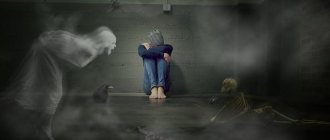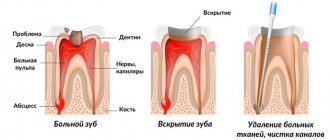Etiology and pathogenesis of narcolepsy
Scientists have not yet been able to establish the exact causes of narcolepsy. For a long time, it was believed that the etiology of the disease was closely related to mental disorders. However, this theory was not confirmed. Nowadays, a theory is being actively researched that proves that the disease occurs due to a lack of a neurotransmitter, which is responsible for maintaining wakefulness. Namely, a biologically active substance, the deficiency of which leads to narcolepsy, may be hypocretin. This deficiency may be genetically determined or occur in cases of severe fatigue, severe infection, pregnancy, or traumatic brain injury.
Another theory proves the autoimmune mechanism of pathology. Proof of this theory is that abnormal T lymphocytes are found in patients with narcolepsy. In addition, the autoimmune origin of the pathology is evidenced by the onset of its development after vaccination or the detection of infectious diseases (measles, influenza). No more is known about the pathogenesis of the pathology than about its origin. Scientists suggest that the main problem of the disease is the untimeliness of the REM sleep phase - it is introduced both during the waking period and the slow-wave sleep phase.
Description
Narcolepsy is a pathology of the central nervous system in which the patient constantly feels an irresistible desire to sleep during the daytime, suddenly falls asleep, has a sleep disorder, may lose muscle tone while his consciousness is working, and experiences hallucinations during awakening and/or falling asleep. Such patients often experience short-term paralysis after waking up. It is worth noting that all symptoms do not need to be present to be diagnosed with narcolepsy. For this, the presence of sudden falling asleep and one or two other symptoms is enough. According to statistics, 20-40 people out of 100 thousand have narcolepsy. Narcolepsy is slightly more common in men than in women. Moreover, almost all patients are young. At the moment, scientists are of the opinion that narcolepsy is inherited, but in most cases the presence of an unfavorable factor is necessary for the development of pathology to begin.
Causes of narcolepsy
The reason for the development of narcolepsy is a disruption of the part of the brain responsible for the process of changing between fast and slow sleep. Thousands of chemical reactions occur in the human brain every second. The transmission of nerve impulses from one part of the brain to another occurs thanks to special substances - neurotransmitters. In some cases, this well-established mechanism malfunctions and the nerve impulse cannot be transmitted normally. In this case, a person experiences pathological drowsiness. The neurotransmitter responsible for human wakefulness is called orexin. It is its deficiency in the body that causes narcolepsy. Scientists have not been able to establish the exact reasons for the decrease in the level of this substance. It is believed that this may occur as a result of:
- the presence of an autoimmune response, when the immune system destroys the cells of its body;
- impaired carbohydrate tolerance;
- brain damage due to trauma;
- damage to the nervous system as a result of infectious processes in the body;
- psychotraumatic situations;
- exhaustion of the body.
Classification of narcolepsy
At the moment, it is customary to distinguish 2 forms of narcolepsy:
- narcolepsy in combination with cataplexy;
- narcolepsy without cataplexy.
Cataplexy is a pathological condition in which a person has a sharp decrease in muscle tone, despite the fact that he is conscious. This most often occurs at moments when the patient experiences strong emotions. In this condition, a person can easily fall into a stupor, drop an object he was holding in his hands, or even fall to the floor. As a rule, cataplexy is replaced by severe drowsiness that lasts several minutes. Based on the cause of the pathological process, the following types of narcolepsy are distinguished:
- genetic - the tendency to it is inherited, but it develops independently, without the presence of provoking factors;
- symptomatic - the tendency to it is transmitted genetically, however, for signs of the disease to appear, the presence of unfavorable factors is necessary (in 35% of cases these are head injuries).
Prognosis of narcolepsy
The prognosis for narcolepsy is not very favorable. At the moment, this disease is incurable. Throughout the patient’s life, the symptoms of the pathology can constantly either increase or, on the contrary, decrease. Often, after some time, a person’s condition stabilizes. As a rule, drowsiness accompanies these people throughout their lives, although cataplexy may decrease with age or disappear altogether. To improve the quality of life, patients should regularly visit a neurologist, take medications prescribed by the doctor, and observe a wakefulness and sleep schedule.
Symptoms of Narcolepsy
The clinical picture of the disease includes four main symptoms: daytime sleepiness, cataplexy, hypnagogic hallucinations and insomnia. Typically, patients experience several of these symptoms at the same time; all four symptoms are diagnosed at once in 10% of cases.
- Daytime sleepiness
- Cataplexy
- Hypnagogic hallucinations
- Sleep paralysis
A patient with narcolepsy experiences several bouts of irresistible drowsiness throughout the day. Such attacks can be either single or multiple. The duration of attacks ranges from several minutes to a couple of hours. The patient is practically unable to resist sudden falling asleep, but he can be woken up in the same way as during normal sleep. In most cases, attacks occur in a monotonous environment, which can cause drowsiness in a healthy person (reading, watching TV).
The patient can also fall asleep in critical situations that require increased attention (while eating, talking, driving a car). After waking up, the patient often feels rested and alert, but after a couple of minutes he may fall asleep again. Night sleep in patients with narcolepsy is often fragmented and accompanied by nightmares, resulting in low productivity and performance during the day. Patients experience decreased motivation, poor concentration, and may experience depression. Patients with narcolepsy are susceptible to increased trauma.
This condition is characterized by sudden muscle weakness and paralysis caused by emotional reactions such as joy, fear, anger, surprise. Weakness can manifest itself in one limb or be generalized. In the latter case, after emotional impact, the patient suddenly collapses. Cataplexy is observed in a third of all patients with narcolepsy.
People with narcolepsy may experience unusual visual and auditory hallucinations while falling asleep. They resemble overly vivid dreams that occur during REM sleep. Most often, such illusions bother children. In adult patients, hallucinations are diagnosed extremely rarely.
A quarter of all patients with narcolepsy suffer from sleep paralysis. This is a transient muscle weakness that occurs when falling asleep or waking up. It does not allow the patient to make voluntary movements. Patients usually feel intense fear due to the inability to move.
Complications
The condition of narcolepsy itself is quite dangerous for the human body
, since it can lead to both domestic injuries and more dire consequences for both the patient himself and those around him.
A sudden disruption of the normal functioning of the brain can lead to temporary disability
. Such people should choose an appropriate type of activity with the possibility of providing rest at the workplace, taking into account the peculiar manifestation of narcolepsy.
Due to characteristic irritability and fatigue, the body's defenses and performance may decrease, so you should choose the optimal daily routine for yourself, preferably with an individual work schedule.
A state of sudden sleep or cataplexy can cause discomfort in the patient, a feeling of shame or embarrassment for his condition. Others may not always adequately perceive what is happening to a person with narcolepsy. Because of this, the quality of life deteriorates, plans are disrupted, and both the patient and his loved ones suffer.
Diagnosis of narcolepsy
It is not possible to diagnose a patient with narcolepsy immediately; on average, the diagnosis is made 10 years after the onset of the disease. Patients who complain of symptoms characteristic of narcolepsy are examined by a neurologist. It must be taken into account that the disease is similar in its clinical manifestations to many other neurological pathologies. That is why, for the most accurate diagnosis, consultations with such specialists as a psychiatrist, endocrinologist, epileptologist, infectious disease specialist, and gastroenterologist may be required.
About the disease
An explanation of what narcolepsy is may be needed at any age, but the disease is more regularly diagnosed in patients aged 15 to 25 years; more than half of the cases occur in men. Sleep disturbance is expressed by the syndrome of sudden falling asleep and complete loss of muscle tone. The phenomenon does not depend on what a person is doing - working out in the gym or reading a book.
Naturally, narcolepsy negatively affects the quality of life, since the patient is forced to impose a number of restrictions on himself. If you are ill, driving a car, working with children, or any other activity with increased responsibility and potential danger to health and life is prohibited.
Differential diagnosis
It is necessary to differentiate narcolepsy first of all from epilepsy. The symptoms of the pathology are also similar to the clinical picture of other types of hypersomnia: psychophysiological, post-traumatic (provoked by a traumatic brain injury, the presence of an intracerebral hematoma), psychopathic (occurs against the background of mental disorders such as schizophrenia or hysteria), associated with inflammatory, tumor or vascular, cerebral diseases, caused by somatic pathologies (diabetes mellitus, pernicious anemia, hypothyroidism, liver failure).
Disability
To obtain various degrees of disability, depending on the indicators, you need to undergo a number of studies:
- electroencephalography (EEG) monitoring;
- experimental psychological research.
Also, if necessary, you should undergo examinations such as:
- consultation with a psychologist and ophthalmologist;
- computed tomography (CT);
- magnetic resonance imaging (MRI).
Disability with narcolepsy is possible for the following reasons:
- general illness;
- symptomatic narcolepsy as a consequence of injuries (military injury, work injury, illness in military service).
In Russia, getting any disability group with a diagnosis of “narcolepsy” will be very problematic, because it is not accepted as a special disease. You need to find out exactly your case and consult with doctors.
This is the only way to find out about the possibility of disability. But if you were able to get a group or just want to know which one you could get, the table below is for you.
| Groups | Forms and vital activity | Criteria for disability |
| III group | Mild narcolepsy and mild disability | Opportunity for light work, moderate monitoring of one's own behavior and first-degree training |
| Group II | Moderate or severe form of narcolepsy with frequent attacks of sleep and serious impairment of life functions | Oppressed opportunities for second-degree labor activity and control over one’s actions |
| Group I | Rarely detected in the most depressing symptoms of narcolepsy with repeated cases of falling asleep, combined with attacks of cataplexy and pronounced impairment of vital functions | Third degree impairment of self-care ability |
Polysomnography
The disease can be diagnosed using polysomnography, which is accompanied by EEG recording and MSLT test. An in-depth and most accurate study of pathology is carried out by a somnologist in the laboratory. The polysomnography technique involves a thorough study of the patient's night sleep. To do this, you need to spend the whole night in a specially designed room under the supervision of a doctor. Using this technique, it is possible to detect a violation of the alternation of sleep phases: an increase in the duration and frequency of the REM sleep phase. The technique also allows you to eliminate similar sleep disorders.
Notes
- IN AND.
Lebedev, O.N. Kuznetsov. Psychology and psychopathology of loneliness. - Ripol Classic, 1972. - P. 245. - 336 p. — ISBN 978-5-45-838898-6. - Wayne, 1966.
- ↑ 1 2 3 Ed.
E. I. Guseva, A. N. Konovalova, V. I. Skvortsova, A. B. Gekht. Neurology: national guidelines. - GEOTAR-Media, 2010. - P. 558. - 1035 p. — ISBN 978-5-97-041714-0. - Harvey Simon, Associate Professor of Medicine, Harvard University;
David Zieve. Narcolepsy Causes. University of Maryland Medical Center. Retrieved April 13, 2012. Archived June 5, 2012. - The mysterious disease narcolepsy: who suffers from it and can it be cured - article in AiF Health
- ↑ 1 2 V. Leonkin, A. Drozdov and others.
Narcolepsy // Complete reference book of a neuropathologist. - Litres, 2021. - P. 404. - 908 p. — ISBN 978-5-45-726494-6. - Barker R., Barazi S., Neil M. Translation from English.
G.N. Levitsky. Narcolepsy // Visual neurology = Neuroscience at a Clance / Ed. IN AND. Skvortsova, Roger Barker. - GEOTAR-Media, 2009. - P. 97. - 132 p. — ISBN 978-5-97-041164-3. - Mitler M. M., Hajdukovic R., Erman M. K. (1993). "Treatment of narcolepsy with methamphetamine." Sleep 16
(4):306–317. PMID 8341891. - ↑ 12
Narcolepsy. Medications // Stanford University, School of Medicine - Golicki D., Bala M. M., Niewada M., Wierzbicka A. (2010). "Modafinil for narcolepsy: systematic review and meta-analysis." Med Sci Monit 16
(8):177–186. PMID 20671626. - Gowda C. R, Lundt L. P. (December 2014). "Mechanism of action of narcolepsy drugs". CNS Spectrums 19
(Supplement 1): 25–33. DOI:10.1017/S1092852914000583. PMID 25403789. - Caputo F., Zoli G. (March 2007). "Treatment of narcolepsy with cataplexy." Lancet 369
(9567):1080–1. DOI:10.1016/S0140-6736(07)60523-6. PMID 17398302. - XYREM (sodium oxybate). United States Food and Drug Administration
(inaccessible link -
history
). Jazz Pharmaceuticals, Inc. (2014). Retrieved March 31, 2021. Archived March 4, 2021. - Lockrane B., Bhatia P., Gore R. (2005). "Successful treatment of narcolepsy and cataplexy: a review." Can Respir J 12
(4):225–227. PMID 16003460.
MSLT test
The day after the polysomnography, the doctor may prescribe an MSLT test for the patient. Namely, the patient will need to try to fall asleep five times during the day. The interval between periods of short-term sleep should be about 2-3 hours. After conducting an MSLT test, a doctor can make a diagnosis if at least two sleep episodes are confirmed. For a more accurate study of the disease, the doctor may prescribe periods of hidden drowsiness. Differential diagnosis of narcolepsy involves the following diagnostic measures: ophthalmoscopy, duplex scanning, MRI of the brain, ultrasound of cerebral vessels.
Consequences
Unfortunately, narcolepsy is an incurable disease. At least at this stage of medical development.
Gelineau's disease affects different areas of a person's life and a huge number of organs of his body:
- Narcolepsy primarily affects physical well-being and safety . The most ordinary activities can become life-threatening: driving, cleaning, cooking and many other processes can be fatal.
- Mental health also suffers . The disease can destroy a person’s life, especially if he was very active and enjoyed extreme sports, and lead to severe depression.
- Social and professional relationships .
With Gelineau's disease, you are unlikely to be hired, and old acquaintances may not be such good friends as you previously thought, and they will leave you. Indeed, few people would want to accept sudden sleep and fatigue as a given. - Intimate relationships with narcolepsy are also under attack . Extreme sleepiness can lead to impotence.
- Memory and attention . The disease will take its toll on memory. It will be difficult for you to concentrate on any things, and huge gaps will form in your memory.
Sleeping mode
Treatment of patients with narcolepsy should begin with normalizing their sleep and wakefulness patterns. It is strongly recommended that you go to bed and wake up at the same time. Almost all patients are shown the following sleep regimen: 7-8 hours of night sleep and two periods of daytime sleep from 15 minutes to half an hour. It is also important to take care of the quality of your sleep. To do this, you should avoid overeating, eating heavy food, and drinking alcohol in the evening.
In addition, patients should change their lifestyle: reduce the impact of stressful situations, significantly reduce the use of stimulants (coffee or nicotine), and begin to actively engage in sports. Often, people with narcolepsy experience a disruption in their biological clock, so they are active at night and feel sleepy during the day. For them, choosing a job that coincides with their natural sleep cycle would be ideal. Such a regime will allow you to get rid of the need to force your body to adhere to a standard operating mode and take stimulant drugs to eliminate drowsiness.
Patients with narcolepsy are advised to take short naps during the day. It is very important to plan your day so that you can take a 10-15 minute nap at least twice. Such sleep cannot fully replace nighttime sleep, but it will help overcome daytime sleepiness.
Affected Populations
The exact number of people with narcolepsy in Russia is unknown. One estimate puts the prevalence at 0.03 to 0.16 percent of the total population in various ethnic groups worldwide. One US study found the incidence of new cases of narcolepsy to be 0.74 per 100,000 person-years in the general US population. The disorder is estimated to affect 1 in 2,000 people in the general population. However, because narcolepsy is often unrecognized or misdiagnosed, determining its true incidence in the general population is difficult.
Narcolepsy can develop at any time from early childhood to age 50. Two peak periods were identified; one is about 15 years old and the other is about 36 years old. Some researchers believe that narcolepsy is underdiagnosed in children. Narcolepsy usually lasts a lifetime. Although the nature and severity of the symptoms experienced by the patient may change over time, the disease does not progress.
Narcolepsy was first described in medical literature in 1880 by Gelineau and in 1887 by Westphal.
Drug treatment
Drug treatment of patients with mild or moderate drowsiness begins with the administration of modafinil, which stimulates wakefulness. At the same time, the drug does not cause a feeling of euphoria or addiction syndrome. It is recommended to take it in the morning in an amount of 100-200 mg orally. If this amount of the drug is not enough to relieve the symptoms of the disease, then the doctor will additionally prescribe another 100 mg. In the most difficult situations, according to indications, the daily dose can be increased to 400 mg.
If narcolepsy does not respond to treatment with modafinil, then the patient is prescribed amphetamine derivatives: methylphenidate or dextroamphetamine. However, it must be remembered that these medications have serious side effects: addiction with a high risk of addiction, tachycardia, arterial hypertension. To reduce the incidence of cataplexy, patients with narcolepsy are prescribed the following drugs: serotonin reuptake inhibitors (Prozac), tricyclic antidepressants (anafranil and tofranil).
Causes
The exact cause of narcolepsy is unknown, and it can be caused by several different factors. The mechanism involves the loss of orexin-releasing neurons in the lateral hypothalamus (about 70,000 neurons).
Up to 10% of cases have a family history of the disease. Family history is more common in narcolepsy with cataplexy. There is a strong association with certain genetic variants. In addition to genetic factors, low levels of orexin peptides are correlated with past infection, diet, exposure to toxins such as pesticides, and brain injury due to head injuries, brain tumors, or strokes. Autoimmunity may also play a role.
Genetics
A primary genetic factor that is strongly implicated in the development of narcolepsy involves a region of chromosome 6 known as the human leukocyte antigen (HLA) complex. Specific HLA gene variations are highly correlated with the presence of narcolepsy; however, these variations are not required for the condition to occur and sometimes occur in people without narcolepsy. These genetic variations in the HLA complex are thought to increase the risk of an autoimmune response to orexin-releasing neurons of the lateral hypothalamus.
The HLA-DQB1*06:02 allele of the human HLA-DQB1 gene has been reported in more than 90% of people with narcolepsy, and alleles of other HLA genes such as HLA-DQA1*01:02 have been linked. A 2009 study found a strong association with polymorphisms in the PROF gene locus (dbSNP identifiers rs1154155, rs12587781, and rs1263646). A 2013 review article reported additional but weaker associations with the TNFSF4 (rs7553711), cathepsin H (rs34593439), and P2RY11-DNMT1 (rs2305795) gene loci. Another gene locus associated with narcolepsy is EIF3G (rs3826784).
H1N1 flu vaccine
An association between GlaxoSmithKline's H1N1 flu vaccine Pandemrix and narcolepsy has been found in both children and adults. The Finnish National Institute of Health and Welfare recommended suspending pandemrix vaccination pending further investigation into narcolepsy.
Forecast and prevention of narcolepsy
To date, narcolepsy has no cure. As for the prognosis for the patient’s life, the disease does not affect its duration, but significantly reduces its quality. Patients who suffer from narcolepsy are prescribed symptomatic therapy. With the help of properly selected drug therapy, you can get rid of the most pronounced symptoms of the pathology. However, it is worth remembering that taking such drugs sometimes leads to side effects. There is no specific prevention of the disease, since the exact causes of its occurrence have not yet been identified.
Forecast
A number of negative consequences (muscle weakening, falling) correlate with increased trauma during the development of an attack, when a person does not control the position of the body. The prognosis is relatively unfavorable. The disease, which occurs in a severe form, leads to social maladaptation and inability to perform professional duties. Seizures occur regularly throughout life. The duration and frequency of episodes of falling asleep can vary at different periods of life.
A sleep disorder called narcolepsy causes episodes of excessive sleepiness. Imperative attacks cannot be controlled by volitional effort and lead to unexpected falling asleep.









